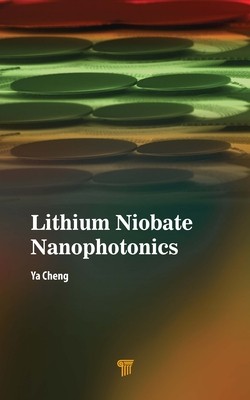
- We will send in 10–14 business days.
- Author: Ya Cheng
- Publisher: Jenny Stanford Publishing
- ISBN-10: 9814877484
- ISBN-13: 9789814877480
- Format: 15.2 x 22.9 x 1.3 cm, hardcover
- Language: English
- SAVE -10% with code: EXTRA
Reviews
Description
Photonic integrated circuit (PIC) technology holds great potential for breaking through the bottlenecks in current photonic and optoelectronic networks. Recently, a revolution has been witnessed in the field of lithium niobate (LN) photonics. Over the past decade, nanoscale LN waveguides with a propagation loss of 0.01 dB and a radius of curvature on the level of 100 μm have been demonstrated. The revolution mainly benefits from two technological advancements, the maturity of lithium-niobate-on-insulator (LNOI) technology and the innovation of nanofabrication approaches of high-quality LNOI photonic structures. Using low-loss waveguides and high-quality-factor (high-Q) microresonators produced on the LNOI platform as building blocks, various integrated photonic devices have been demonstrated with unprecedented performances. The breakthroughs have reshaped the landscape of the LN industry.
This is the first monograph on LN nanophotonics enabled by the LNOI platform. It comprehensively reviews the development of fabrication technology, investigations on nonlinear optical processes, and demonstrations of electro-optical devices, as well as applications in quantum light sources, spectroscopy, sensing, and microwave-to-optical wave conversion. The book begins with an overview of the technological evolution of PICs, justifying the motivation for developing LNOI photonics. The next four chapters focus on LNOI photonics. The book concludes with a summary of the milestone achievements discussed in these chapters and provides a future perspective of this area of research.
EXTRA 10 % discount with code: EXTRA
The promotion ends in 18d.10:58:31
The discount code is valid when purchasing from 10 €. Discounts do not stack.
- Author: Ya Cheng
- Publisher: Jenny Stanford Publishing
- ISBN-10: 9814877484
- ISBN-13: 9789814877480
- Format: 15.2 x 22.9 x 1.3 cm, hardcover
- Language: English English
Photonic integrated circuit (PIC) technology holds great potential for breaking through the bottlenecks in current photonic and optoelectronic networks. Recently, a revolution has been witnessed in the field of lithium niobate (LN) photonics. Over the past decade, nanoscale LN waveguides with a propagation loss of 0.01 dB and a radius of curvature on the level of 100 μm have been demonstrated. The revolution mainly benefits from two technological advancements, the maturity of lithium-niobate-on-insulator (LNOI) technology and the innovation of nanofabrication approaches of high-quality LNOI photonic structures. Using low-loss waveguides and high-quality-factor (high-Q) microresonators produced on the LNOI platform as building blocks, various integrated photonic devices have been demonstrated with unprecedented performances. The breakthroughs have reshaped the landscape of the LN industry.
This is the first monograph on LN nanophotonics enabled by the LNOI platform. It comprehensively reviews the development of fabrication technology, investigations on nonlinear optical processes, and demonstrations of electro-optical devices, as well as applications in quantum light sources, spectroscopy, sensing, and microwave-to-optical wave conversion. The book begins with an overview of the technological evolution of PICs, justifying the motivation for developing LNOI photonics. The next four chapters focus on LNOI photonics. The book concludes with a summary of the milestone achievements discussed in these chapters and provides a future perspective of this area of research.


Reviews